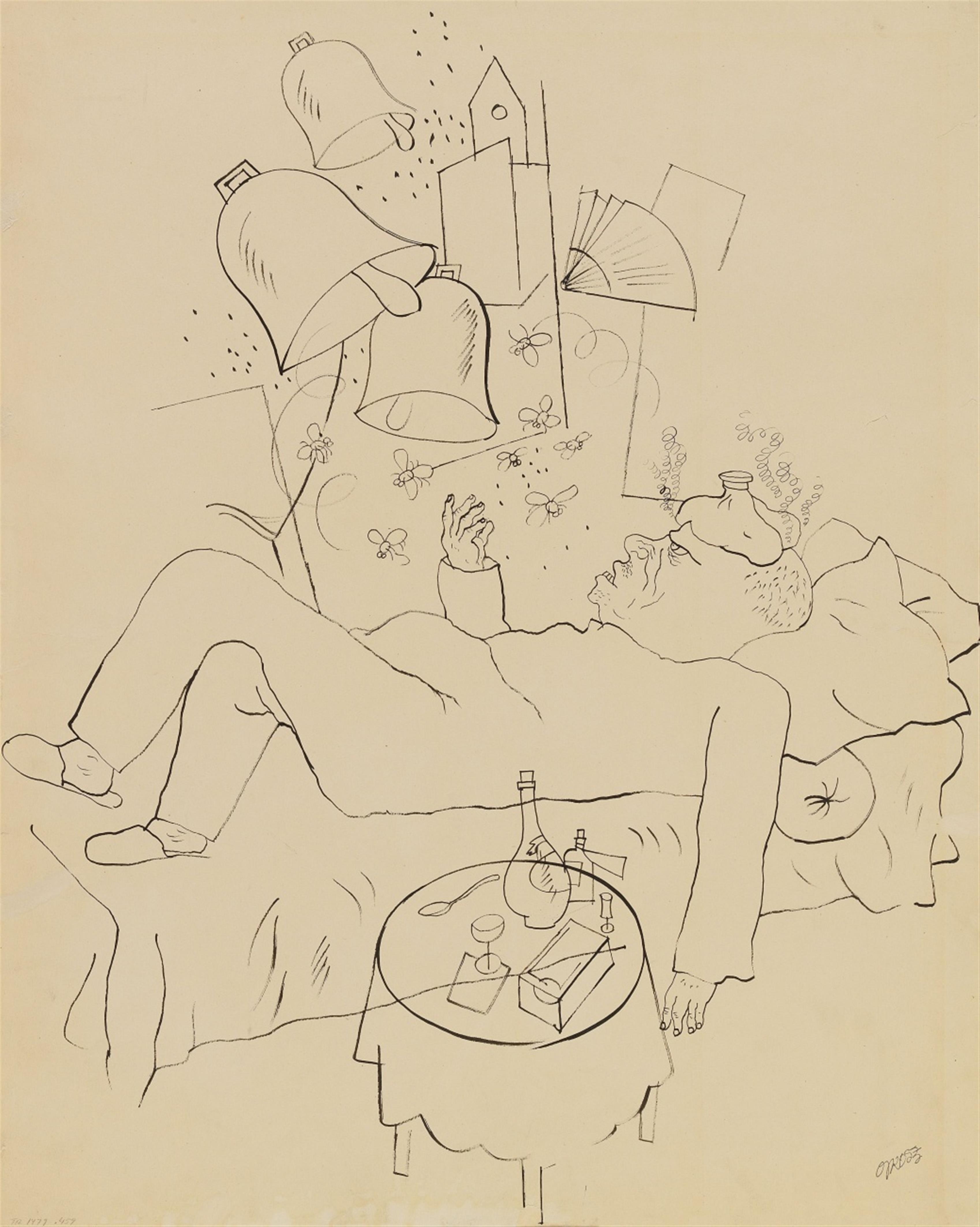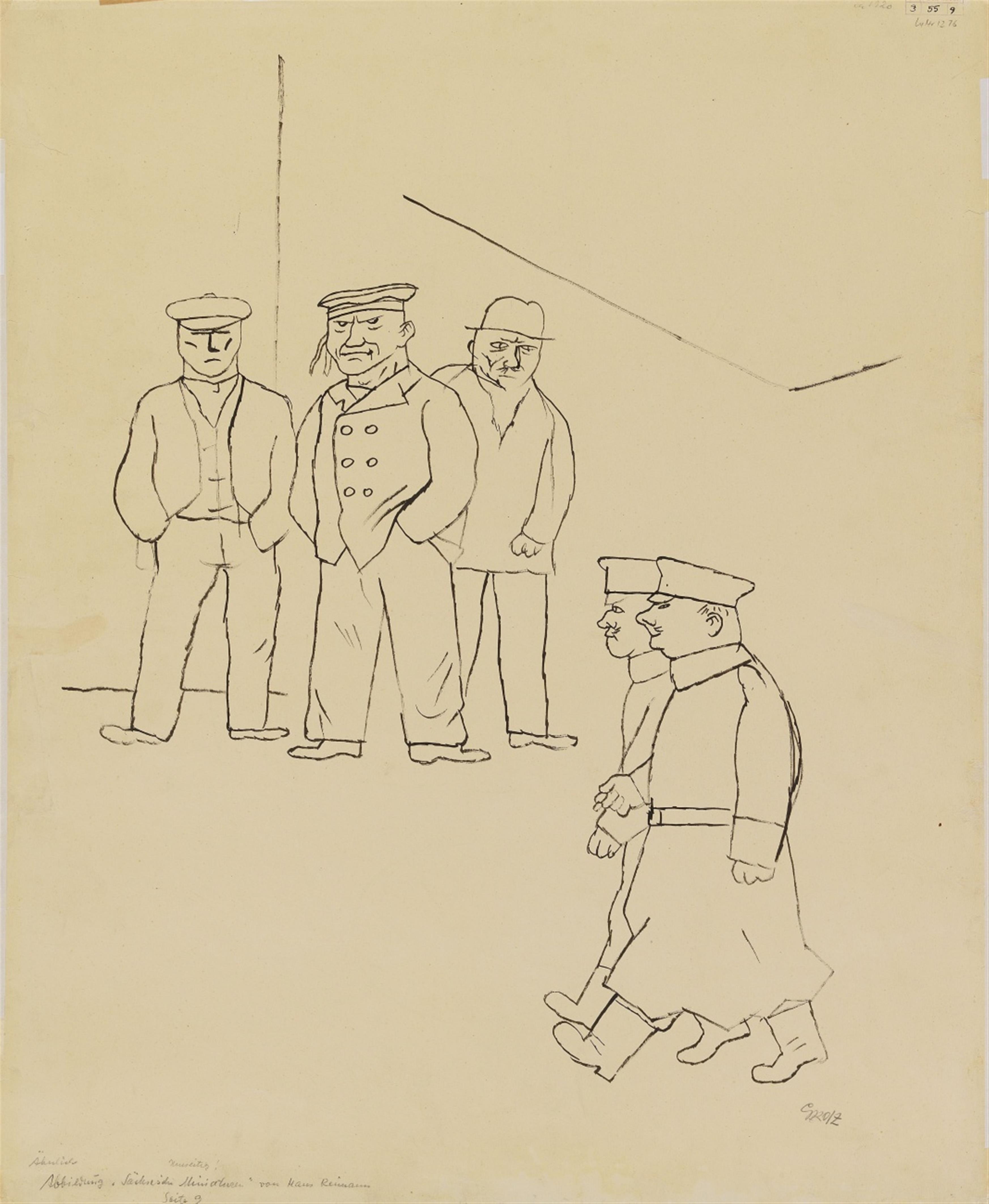George Grosz
Es klingt wie fernes Glockenläuten. Verso: Doppelstreife
Circa 1920
Double-sided pen and ink drawing on smooth wove paper with faint embossed stamp "Schoeller-Turm". 65 x 52.7 cm Framed under glass. Stamped signature lower right and signed 'Grosz' in pencil verso. Stamped "George Grosz Nachlass" on frame verso, therein numbered "3 55 9" by hand and "Ly Nr 12 76" in pencil and "TR 1479.459" recto. - Marginal defects.
Our double-sided sheet featuring a pair of large-format drawings is almost a symbolic embodiment of George Grosz's multifaceted occupation with the society of the German Empire and urban life between excess and abyss: “Grosz was fascinated by the urban society he criticised. He loved the metropolises, their aesthetic and their optical forms of interaction, and he enjoyed the public roles they assigned to the artist. Artistic intelligence, sensitivity and his irascibility made Grosz an encyclopedist of the big cities: their beauty as well as their moral ruthlessness. More so than almost any other body of work, Grosz's art thus proves to be not just a vivid weapon against oppression and stupidity, but simultaneously a visual memory and archive of our century's urban life-forms. The physiognomy of this century: in Grosz's work it is unmasked and glorified at the same time. This is the basis of his extraordinary status.” These words are from the foreword of the catalogue for the seminal show “George Grosz: Berlin - New York”, and it is precisely these qualities of the razor-sharp diagnostician of a radically ambivalent period which the present drawings illustrate (exhib. cat. George Grosz: Berlin - New York, Berlin/Düsseldorf 1994-1995, p. 19).
Upheaval is all too reserved as a description of the political and social state of affairs in the post-revolutionary Germany of 1920. After peace was concluded in Versailles, the Nazi party was founded in Munich's Hofbräuhaus, barricades were erected along the Ruhr and there was a putsch against the recently elected government in Berlin. Here Grosz's depiction of the morphine user or boozer plagued by a headache and insomnia as well as pestered by the buzzing insects and the droning toll of the nearby church's bells seem to present a no less laconic critique of his time than the scene of the constables patrolling in front of the workers and sailors. The war is over, but the signs of poisoning persist.
Certificate
With a photo-certificate from Ralph Jentsch, Rome/Berlin, dated 24 April 2018. The double-sided drawing is included in the catalogue raisonné of the works on paper.
Provenance
Galerie Michael, Bremen; Private collection, Lower Saxony
Literature
Exhib. cat. Ohne Hemmung. Gesicht und Kehrseite der Jahre 1914-1924 schonungslos enthüllt von George Grosz. Zeichnungen und farbige Blätter, Galerie Meta Nierendorf, 1962/1963, cf. cat. no. 27 (variant of "Doppelstreife"); Hans Reimann, Hans Reimans sächsische Miniaturen, Düsseldorf 1991, illus. p. 9




